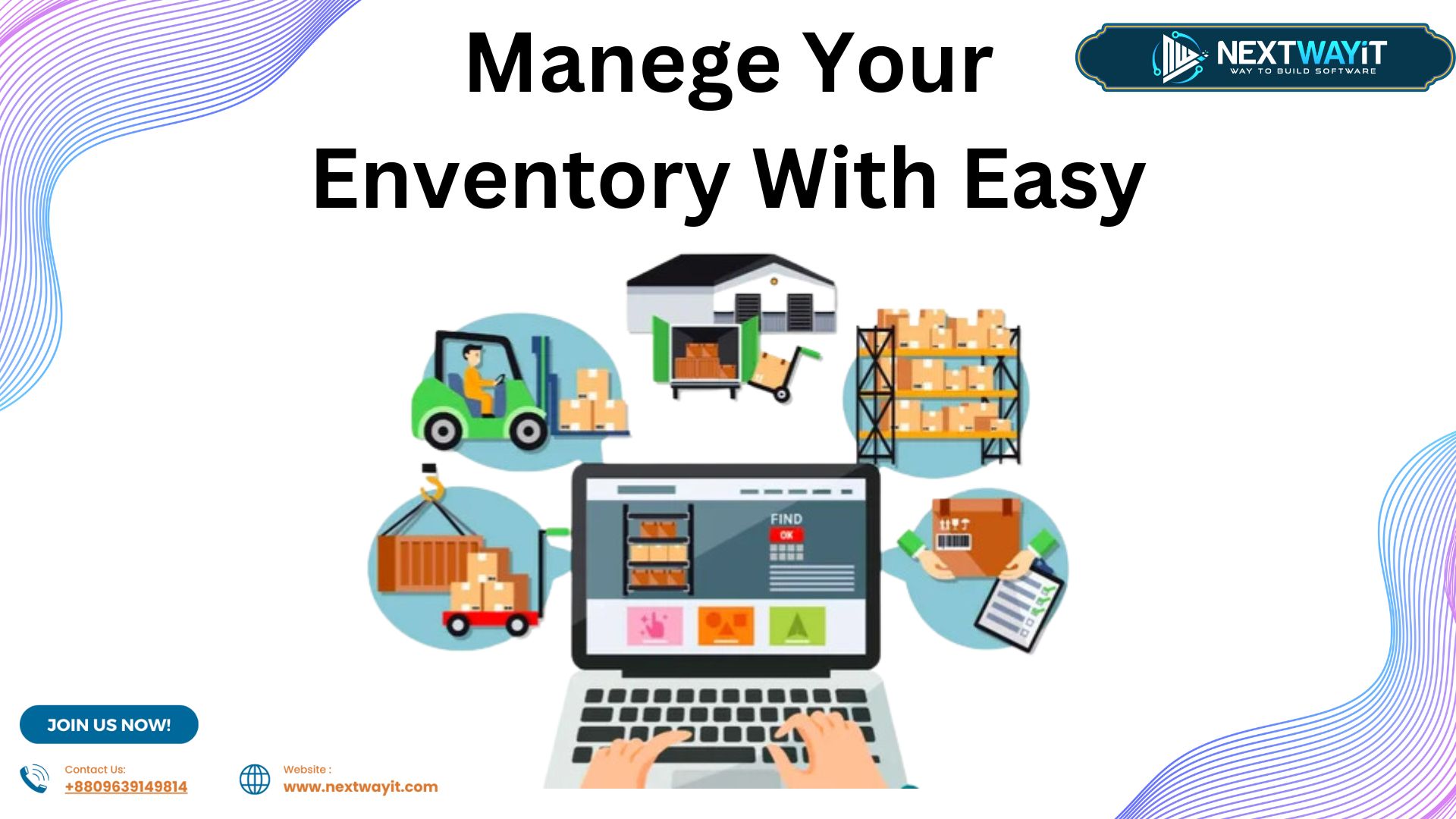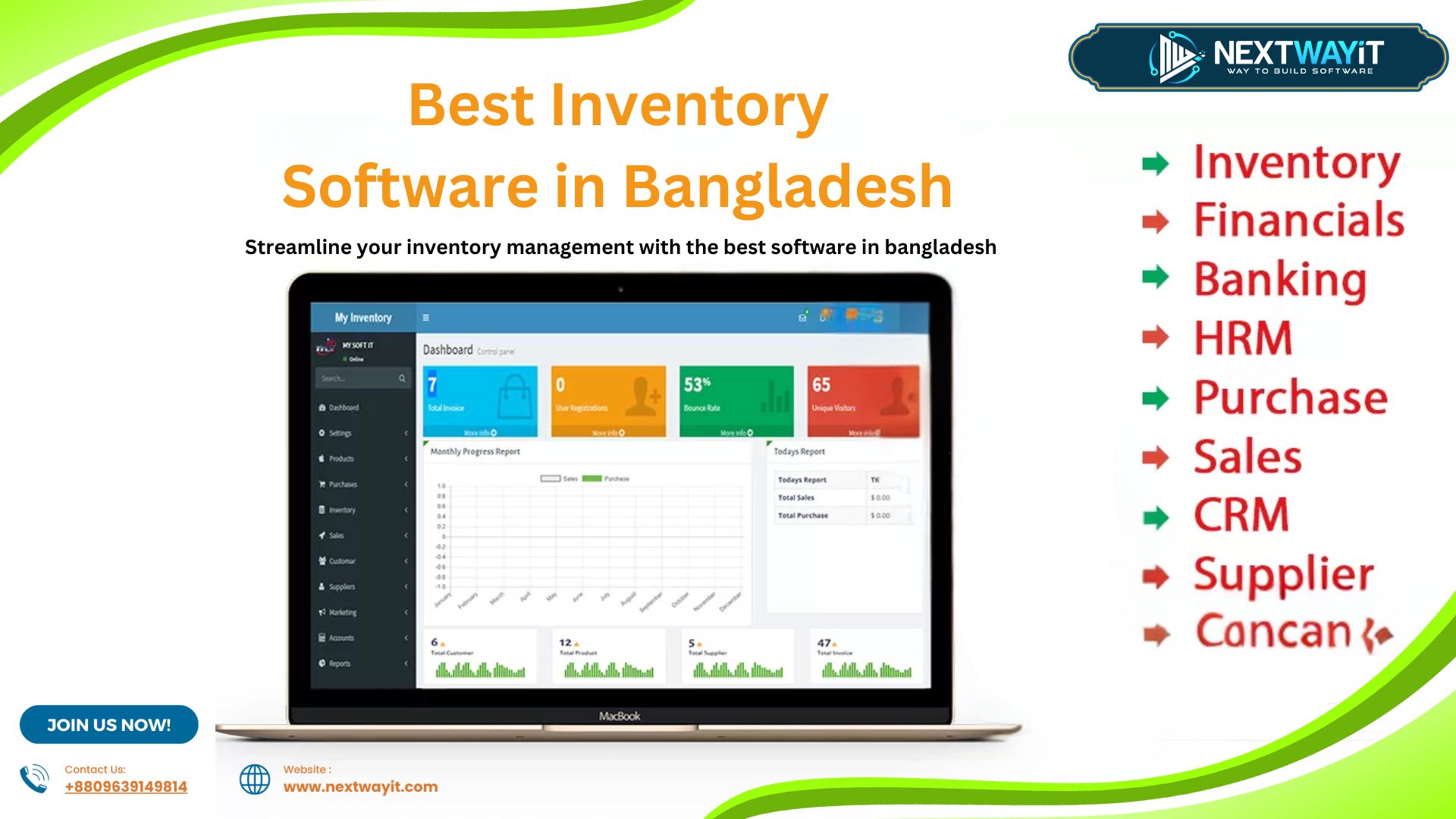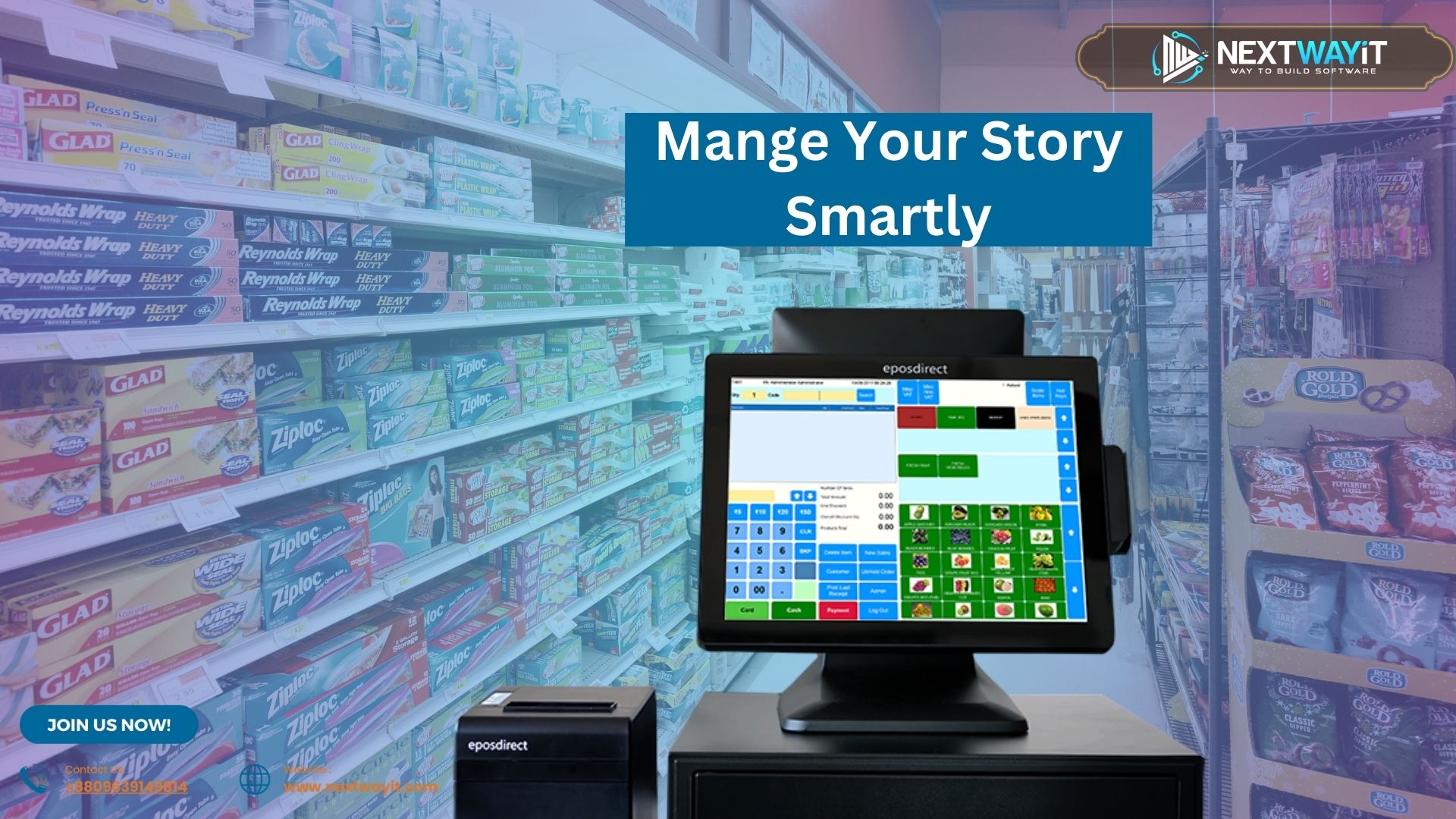
Maximizing Small Business Success with Advanced Inventory Management Software
In this article discuss about inventory management software for small business. In today’s highly competitive market, small businesses face constant pressure to streamline operations, reduce costs, and meet customer expectations. Inventory management lies at the heart of these challenges. Managing inventory effectively can make the difference between a thriving business and one that struggles with inefficiencies, lost sales, and excessive costs. Fortunately, advanced inventory management software offers a solution tailored to the needs of small businesses. This article delves into the intricacies of inventory management software, discussing its essential features, benefits, and best practices for implementation. We’ll also explore how it can transform your business operations, ultimately leading to greater profitability and growth.
- The Role of Inventory Management in Small Businesses
Inventory management is more than just keeping track of stock; it involves the entire process of sourcing, storing, and selling products. For small businesses, this can be particularly challenging due to limited resources and the need to juggle multiple responsibilities. Effective inventory management ensures that the right products are available at the right time, minimizing costs associated with excess stock or stockouts. It also plays a critical role in maintaining healthy cash flow, as tying up too much capital in inventory can stifle growth and limit opportunities for expansion.
- What is Inventory Management Software?
Inventory management software is a digital solution designed to automate and streamline the processes involved in managing inventory. From tracking stock levels to forecasting demand, this software provides small businesses with the tools they need to maintain optimal inventory levels, reduce waste, and improve overall efficiency. By integrating with other systems such as accounting, point-of-sale (POS), and e-commerce platforms, inventory management software offers a centralized hub for managing all inventory-related activities.
- Key Benefits of Inventory Management Software for Small Businesses
a. Enhanced Accuracy and Efficiency
One of the most significant benefits of inventory management software is the increased accuracy it brings to inventory tracking. Manual processes are prone to human error, which can lead to discrepancies in stock levels, lost sales, or excess inventory. Automated inventory management software reduces these risks by providing real-time updates on stock levels, enabling businesses to maintain accurate records with minimal effort.
b. Cost Reduction and Profit Maximization
Inventory management software helps small businesses reduce costs in several ways. By optimizing stock levels, the software ensures that businesses are not overstocking, which can tie up capital and lead to higher storage costs. Additionally, it helps prevent stockouts, which can result in lost sales and dissatisfied customers. By maintaining the right balance of inventory, businesses can maximize profitability and ensure a steady cash flow.
c. Improved Decision-Making with Data Analytics
Data is a powerful tool for making informed business decisions. Inventory management software provides detailed reports and analytics on inventory levels, sales trends, and customer behavior. This data allows small business owners to identify patterns, forecast demand, and make strategic decisions that align with their business goals. For instance, understanding which products are best sellers and which are slow-moving can help businesses adjust their purchasing strategies accordingly.
d. Streamlined Order Management and Fulfillment
Effective order management is crucial for meeting customer expectations. Inventory management software automates the order management process, from creating purchase orders to tracking shipments. This not only saves time but also ensures that orders are fulfilled accurately and on time. Integration with e-commerce platforms and shipping carriers further streamlines the fulfillment process, allowing businesses to offer faster and more reliable delivery services.
e. Scalability and Flexibility
As small businesses grow, their inventory management needs become more complex. Inventory management software is designed to scale with the business, offering additional features and integrations as needed. Whether you’re expanding to new locations, adding new product lines, or entering new markets, the software can adapt to your changing needs, ensuring that your inventory management processes remain efficient and effective.
- Essential Features of Inventory Management Software
When selecting inventory management software, it’s important to choose a solution that meets the specific needs of your business. Here are some essential features to consider:
a. Real-Time Inventory Tracking
Real-time inventory tracking is a must-have feature for any inventory management software. This functionality allows businesses to monitor stock levels at all times, ensuring that they have accurate, up-to-date information on product availability. This is particularly important for businesses that sell across multiple channels, as it helps prevent overselling and stockouts.
b. Automated Reordering and Demand Forecasting
Automated reordering is a feature that simplifies the replenishment process by automatically generating purchase orders when stock levels fall below a predefined threshold. This ensures that businesses always have enough stock on hand to meet demand without overstocking. Additionally, demand forecasting tools use historical sales data to predict future demand, helping businesses plan their inventory purchases more effectively.
c. Multi-Location Inventory Management
For businesses with multiple locations or warehouses, multi-location inventory management is essential. This feature allows businesses to track inventory across different sites, ensuring that stock levels are balanced and products are distributed efficiently. It also enables businesses to transfer stock between locations as needed, reducing the risk of stockouts or excess inventory.
d. Barcode Scanning and RFID Technology
Barcode scanning and RFID (Radio-Frequency Identification) technology are tools that streamline the process of adding, removing, and tracking inventory. By using barcodes or RFID tags, businesses can quickly and accurately update their inventory records, reducing the risk of errors and speeding up processes like receiving shipments and fulfilling orders.
e. Integration with Other Business Systems
Inventory management software should integrate seamlessly with other business systems, such as accounting software, POS systems, and e-commerce platforms. This integration ensures that all aspects of the business are synchronized, from inventory levels to financial records, making it easier to manage operations and make informed decisions.
f. Customizable Reporting and Analytics
The ability to generate customizable reports and analyze data is a critical feature for small businesses. Inventory management software should offer a range of reporting options, allowing businesses to track key metrics such as inventory turnover, stock levels, and sales performance. Customizable dashboards and visualizations make it easier to interpret data and identify trends.
- Cloud-Based vs. On-Premise Inventory Management Software
When choosing inventory management software, small businesses must decide between cloud-based and on-premise solutions. Each option has its own set of advantages and considerations:
a. Cloud-Based Inventory Management Software
Cloud-based inventory management software is hosted on remote servers and accessed via the internet. This type of software offers several benefits, including:
- Flexibility and Accessibility: Cloud-based software can be accessed from any device with an internet connection, making it easy to manage inventory on the go.
- Scalability: Cloud solutions are highly scalable, allowing businesses to add or remove features and users as needed.
- Automatic Updates: Cloud-based software is automatically updated by the provider, ensuring that businesses always have access to the latest features and security enhancements.
- Lower Upfront Costs: Cloud solutions typically operate on a subscription basis, reducing the need for large upfront investments in hardware and software.
b. On-Premise Inventory Management Software
On-premise inventory management software is installed locally on the business’s servers. While this option requires a larger initial investment, it offers several advantages:
- Customization: On-premise software can be customized to meet the specific needs of the business, offering greater control over features and functionality.
- Data Security: For businesses with strict data security requirements, on-premise software provides greater control over data storage and access.
- Independence from Internet Connectivity: On-premise solutions do not rely on internet connectivity, making them ideal for businesses in areas with unreliable internet access.
- Cost Considerations for Inventory Management Software
The cost of inventory management software can vary widely depending on the features, scalability, and support offered by the solution. When evaluating costs, small businesses should consider both the upfront and ongoing expenses:
a. Subscription vs. Perpetual Licensing
Cloud-based software typically operates on a subscription basis, with monthly or annual fees. These fees can range from a few dollars per month for basic solutions to several hundred dollars per month for more advanced systems. On-premise software, on the other hand, often requires a one-time licensing fee, with additional costs for updates and support. Businesses should weigh the benefits of each pricing model to determine which offers the best value for their needs.
b. Implementation and Training Costs
In addition to the cost of the software itself, businesses should factor in the costs associated with implementation and training. This may include fees for data migration, customization, and user training. Choosing a vendor that offers comprehensive support during the implementation process can help minimize these costs and ensure a smooth transition.
c. Total Cost of Ownership
When evaluating the cost of inventory management software, it’s important to consider the total cost of ownership (TCO). This includes not only the initial purchase price or subscription fees but also ongoing costs such as maintenance, support, and updates. By calculating the TCO, businesses can make more informed decisions about which solution offers the best long-term value.
- Best Practices for Implementing Inventory Management Software
Successfully implementing inventory management software requires careful planning and execution. Here are some best practices to ensure a smooth transition:
a. Conduct a Thorough Needs Assessment
Before selecting and implementing inventory management software, it’s important to conduct a thorough needs assessment. This involves evaluating your current inventory management processes, identifying pain points, and determining which features are most important for your business. By understanding your specific needs, you can choose a software solution that aligns with your goals.
b. Involve Key Stakeholders
Involving key stakeholders in the decision-making process is essential for gaining buy-in and ensuring a successful implementation. This includes not only business owners and managers but also employees who will be using the software on a daily basis. Their input can help identify potential challenges and ensure that the chosen solution meets the needs of all users.
c. Plan for Data Migration
Data migration is a critical step in the implementation process. This involves transferring your existing inventory data to the new system, which can be complex and time-consuming. To ensure accuracy, it’s important to plan the migration carefully, test the process, and verify that all data has been transferred correctly.
d. Provide Comprehensive Training
Training is essential for ensuring that your team can use the inventory management software effectively. Many vendors offer training resources, such as webinars, tutorials, and user guides, to help employees get up to speed. Providing comprehensive training not only improves efficiency but also reduces the risk of errors during day-to-day operations.
e. Monitor and Optimize
After implementing the software, it’s important to monitor its performance and make adjustments as needed. Regularly reviewing key metrics, such as inventory turnover and order fulfillment times, can help identify areas for improvement. By continuously optimizing your inventory management processes, you can maximize the benefits of the software and ensure long-term success.
- Overcoming Common Challenges in Inventory Management Software Implementation
Implementing inventory management software can present several challenges, particularly for small businesses with limited resources. However, these challenges can be overcome with careful planning and support:
a. Resistance to Change
One of the most common challenges is resistance to change, particularly among employees who are accustomed to manual processes. To overcome this, it’s important to communicate the benefits of the software clearly and involve employees in the decision-making process. Providing adequate training and support can also help ease the transition.
b. Data Migration Issues
Data migration can be complex, particularly if your existing inventory records are incomplete or inaccurate. To minimize the risk of data migration issues, it’s important to conduct a thorough data audit before the migration process begins. This involves verifying the accuracy of your existing records and identifying any discrepancies that need to be addressed.
c. Integration Difficulties
Integrating inventory management software with other business systems, such as accounting software and e-commerce platforms, can be challenging. To ensure a smooth integration, it’s important to choose a solution that offers robust integration capabilities and to work closely with your software vendor to address any compatibility issues.
- Case Studies: Real-World Success Stories
Many small businesses have successfully implemented inventory management software and experienced significant improvements in their operations. Here are a few examples:
a. Retail Store Success Story
A small retail store specializing in home goods was struggling with overstocking and stockouts, leading to lost sales and increased costs. After implementing cloud-based inventory management software, the store was able to track inventory levels in real-time and automate the reordering process. As a result, the store reduced stockouts by 40%, improved customer satisfaction, and increased sales by 25%.
b. Wholesale Distributor Success Story
A wholesale distributor of automotive parts was facing challenges with inventory accuracy and order fulfillment. By implementing an on-premise inventory management solution with barcode scanning and RFID technology, the distributor was able to streamline its receiving and order fulfillment processes. This led to a 30% reduction in order processing times, a 20% decrease in holding costs, and a 15% increase in profitability.
c. E-commerce Business Success Story
An e-commerce business specializing in fashion accessories was struggling to keep up with demand due to inaccurate inventory tracking and slow order fulfillment. After integrating inventory management software with its e-commerce platform, the business was able to automate the order management process and provide real-time inventory updates to customers. This resulted in a 50% reduction in shipping errors, a 30% improvement in delivery times, and a significant boost in customer satisfaction.
- The Future of Inventory Management Software
The future of inventory management software is bright, with several emerging trends set to transform the way small businesses manage their inventory. These include:
a. Artificial Intelligence and Machine Learning
Artificial intelligence (AI) and machine learning (ML) are poised to play a major role in the future of inventory management. These technologies can analyze vast amounts of data to provide more accurate demand forecasts, optimize stock levels, and identify patterns that may not be apparent through manual analysis. AI-powered inventory management software can also automate decision-making processes, such as determining when to reorder stock or how to allocate products across multiple locations.
b. Internet of Things (IoT) and Real-Time Tracking
The Internet of Things (IoT) is revolutionizing inventory management by enabling real-time tracking of products throughout the supply chain. IoT devices, such as smart sensors and RFID tags, can provide real-time data on the location and condition of inventory, helping businesses optimize their logistics and reduce the risk of stockouts or overstocking. This technology also enables more accurate inventory tracking and faster response times to changes in demand.
c. Sustainability and Ethical Inventory Management
As consumers become more conscious of environmental and ethical issues, businesses are increasingly adopting sustainable practices in their inventory management. This includes reducing waste, optimizing resource use, and sourcing products from ethical suppliers. Inventory management software can support these efforts by providing data on the environmental impact of inventory decisions and helping businesses implement more sustainable practices.
Conclusion
Inventory management software is an indispensable tool for small businesses looking to optimize their operations, reduce costs, and improve customer satisfaction. By automating inventory tracking, order management, and demand forecasting, this software enables businesses to operate more efficiently and make data-driven decisions. Whether you choose a cloud-based or on-premise solution, the key is to select a software that aligns with your business’s unique needs and goals. As technology continues to evolve, staying ahead of emerging trends such as AI, IoT, and sustainability will further enhance your inventory management capabilities, positioning your business for long-term success. Investing in inventory management software is not just a smart business decision—it’s a crucial step toward building a more resilient and competitive small business.



